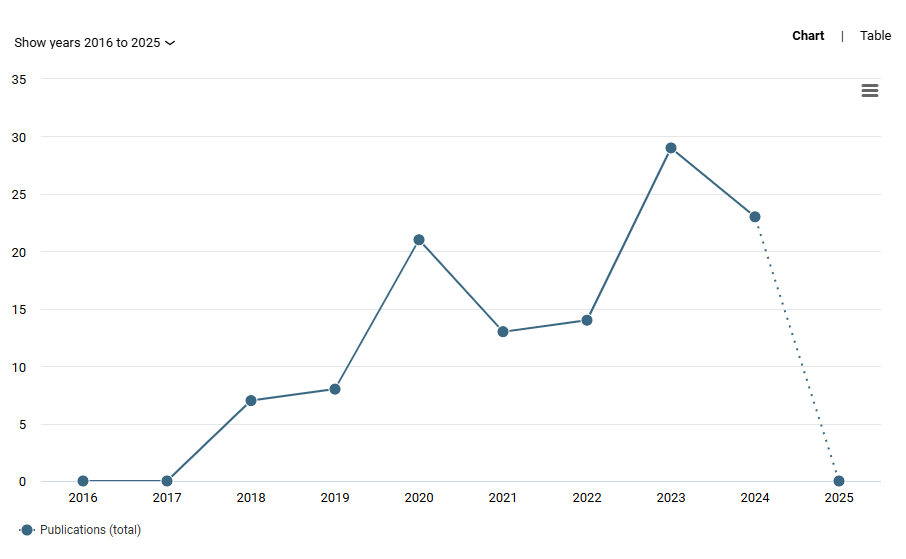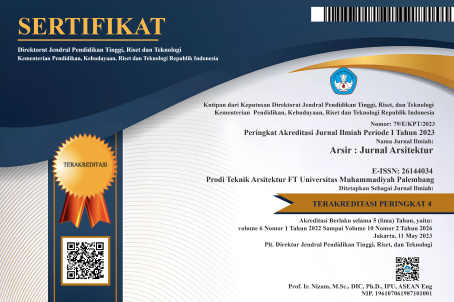Community Perceptions of the Physical and Spatial Characters of Cities Experiencing Urban Heat Island Effect
DOI:
https://doi.org/10.32502/arsir.v9i1.450Keywords:
City, community perceptions, spatial physical characteristics, Urban Heat IslandAbstract
Climate change and rapid urbanization have heightened the need for effective Urban Heat Island (UHI) mitigation strategies to foster sustainable urban development. This study examines public perceptions of UHI and the physical-spatial characteristics of cities affected by it, an area that has not been extensively explored in relation to demographic factors. Using an open questionnaire survey, demographic data, awareness, and community responses to UHI from 119 respondents were analyzed qualitatively with a Grounded Theory approach, employing open coding techniques. The objective of this study is to identify patterns of relationships between demographic factors, public perceptions, and knowledge regarding UHI. The findings revealed that 31% of respondents identified insufficient vegetation as the primary cause of UHI, followed by high building density (30%) and fossil fuel-based activities (17%). Education level was found to significantly influence awareness, with individuals holding a master's degree (S2) exhibiting 19% higher awareness compared to those with a bachelor's degree (S1). Public perceptions were also influenced by geographical distribution, with 68% of respondents residing in Bandung. The study also identified nine key physical-spatial characteristics associated with UHI, including limited vegetation, air pollution, and inadequate shading. Three major challenges were identified: insufficient public education on UHI, weak communication between researchers and policymakers, and limited implementation of data-driven mitigation strategies at the municipal level. The conclusions drawn from this study provide valuable insights for developing more inclusive, data-driven policies and emphasize the importance of community involvement in designing cities that are resilient to climate change and the impacts of UHI.
Downloads
Published
How to Cite
Issue
Section
License
Copyright (c) 2025 Farhan Ramadhan, Dewi Larasati, Hanson Endra Kusuma, Roiswahid Dimas Pangestu

This work is licensed under a Creative Commons Attribution-ShareAlike 4.0 International License.
Arsir: Jurnal Arsitektur (AJA) have CC-BY-SA or an equivalent license as the optimal license for the publication, distribution, use, and reuse of scholarly work.
Authors who publish Arsir: Jurnal Arsitektur (AJA) agree to the following terms: Authors retain copyright and grant the Arsir: Jurnal Arsitektur (AJA) right of first publication with the work simultaneously licensed under a Creative Commons Attribution License (CC BY-SA 4.0) that allows others to share (copy and redistribute the material in any medium or format) and adapt (remix, transform, and build upon the material) the work for any purpose, even commercially, with an acknowledgement of the work's authorship and initial publication in Arsir: Jurnal Arsitektur (AJA). Authors are able to enter into separate, additional contractual arrangements for the non-exclusive distribution of the journal's published version of the work (e.g., post it to an institutional repository or publish it in a book), with an acknowledgement of its initial publication in Arsir: Jurnal Arsitektur (AJA). Authors are permitted and encouraged to post their work online (e.g., in institutional repositories or on their website) prior to and during the submission process, as it can lead to productive exchanges as well as earlier and greater citation of published work (see The Effect of Open Access).
![]()
Work is distributed below This work is licensed under a Creative Commons Attribution-ShareAlike 4.0 International License.










